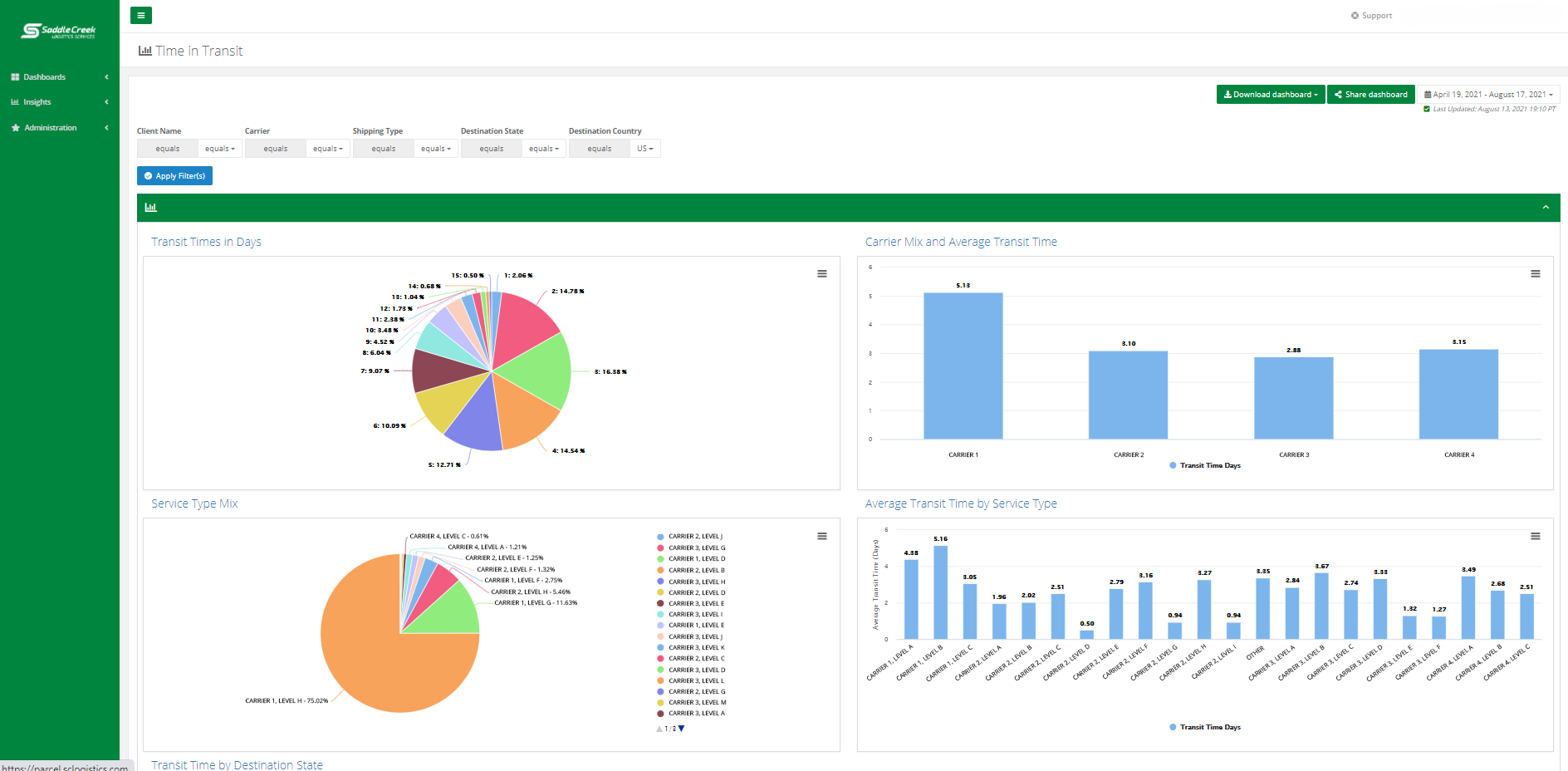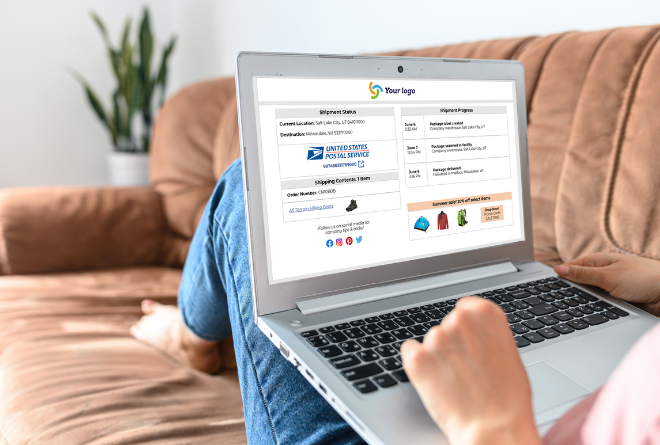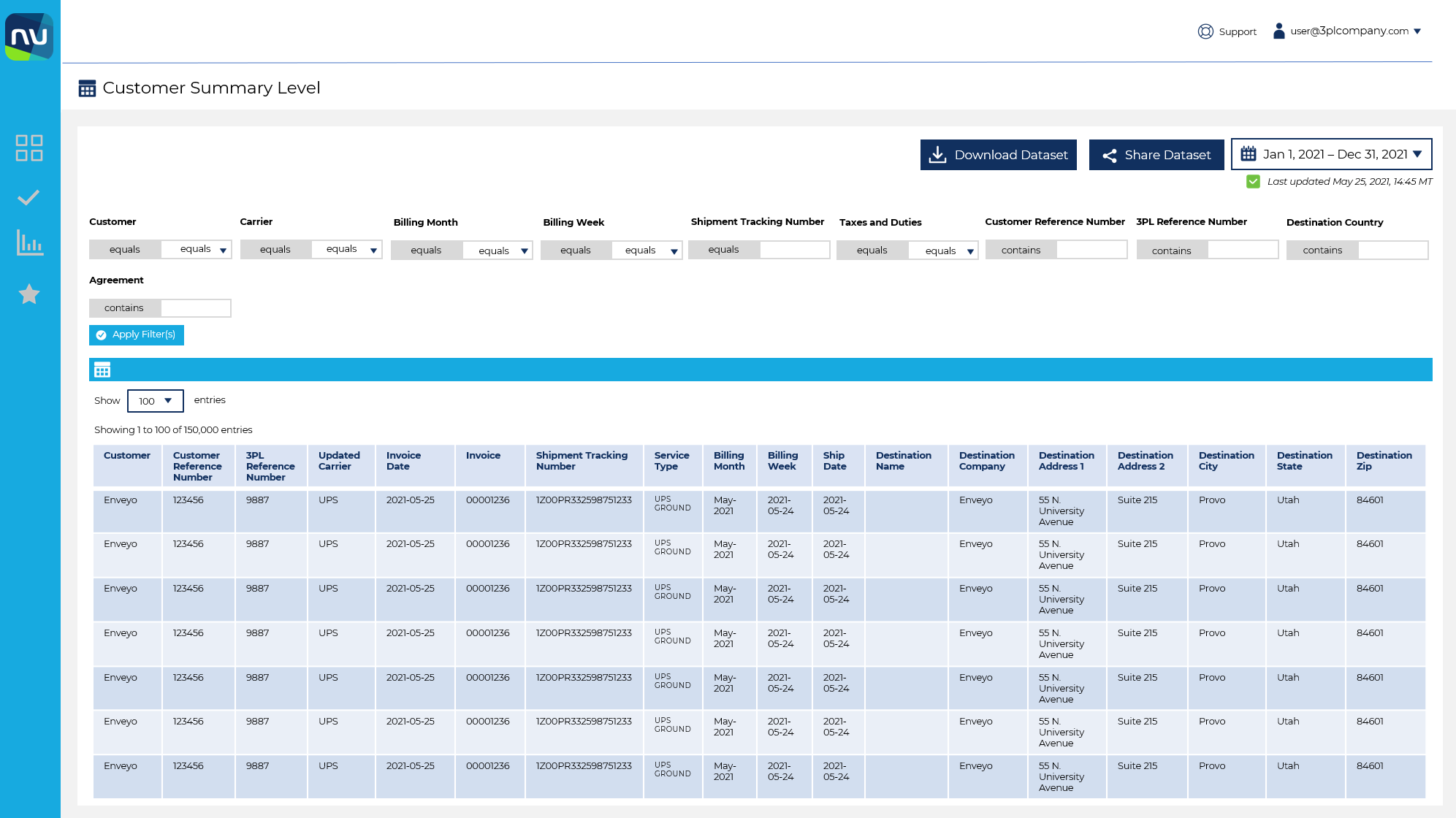Customer satisfaction has never been more important for third-party logistics (3PL) providers. Their brick-and-mortar and e-commerce customers want to offer a seamless delivery experience that gets products to consumers faster, more efficiently, and at the lowest cost. In this blog, we look at five ways 3PLs can help.
When brick-and-mortar stores closed during the pandemic, e-commerce became essential for consumers to buy goods. People bought everything from cars to groceries from the comfort of their homes, and data indicates those shopping habits will continue.
An ESET survey found that 70 percent of Americans are shopping more online than before the pandemic. And according to Mastercard, online sales jumped 54 percent in February 2021 from a year ago.
With so many turning to online shopping, many shippers are also turning to 3PL providers to optimize their product fulfillment. Now, instead of competing on product or brand loyalty, companies are competing on customer delivery experience.
Here’s how 3PLs can get the job done.
5 Ways to Improve 3PL Customer Satisfaction
1. Data Visibility
In today’s world, consumers expect to receive packages in two days or less and at the lowest cost. And meeting that high standard requires better visibility into your shipping data.
As a result, many 3PLs have started offering their customers in-depth dashboards that provide access to real-time data, including:
- Parcel billing metrics, including accessorial and exception charges
- Shipping time in transit
- Carrier performance
How critical is data visibility? Let’s put it this way. 3PLs that can’t provide this benefit will likely lose customers to providers that can. And if a customer asks you for their data, it’s a sign they’re shopping for a new 3PL partner.

*Saddle Creek Time in Transit Dashboard Powered by Enveyo
2. TMS Software
Retailers and online stores need to find the best shipping service and lowest rate for each package. Otherwise, they can kiss their traditionally small margins goodbye.
To ensure 3PLs can ship at the volume consumers demand, many companies are diversifying their carrier strategy and onboarding additional carriers at the national, regional, and final mile levels. As a result, 3PLs need a software application to manage it all and integrate with each carrier to carry out this strategy efficiently.
Transportation management systems (TMS) enable shippers to automate an infinite number of rulesets to select the most efficient and cost-effective carrier, mode, and service for each package. This makes the 3PL’s job easier by removing time-consuming and manual interactions with carriers’ systems while keeping your retail and e-commerce clients happy with a delivery experience they can rely on.
3. Customer Alerting
When it comes to online shopping, real-time customer alerts play an essential role in the delivery experience. Consumers expect alerts when their order has been placed, shipped, delivered, as well as when unexpected delays occur. These alerts come as texts, emails or both. Not only is customer alerting a must-have in today’s e-commerce landscape, but it also serves as a dynamic marketing tool for 3PLs and their customers to promote products and services.
With the right customer alerting system in place, consumers get real-time visibility into the order delivery process. This adds value to the 3PL customer competing for brand loyalty and the best delivery experience. 3PLs can also offer customer alerting as a service option to your customers, providing an additional revenue stream and added value.
4. Billing Management
Billing management becomes more complex as your 3PL grows. For example, 3PLs shipping through multiple carriers with varying services and rates results in a vast number of carrier bills throughout the month.
Not only do you have to pay those bills, but you must also bill back your customers, which can quickly get confusing the more customers and carriers you partner with. Even the smallest charges have an impact – missing parts, returns, failed delivery, and other problems, make it harder to send accurate bills to customers.
Billing management software helps ensure each and every customer gets the right bill, and your customers want visibility into their charges. Leveraging a comprehensive, integrated reporting tool allows you to simplify carrier billing while providing your customers with a platform to view their business-specific data. Your customers will be happy knowing their bills are correct and justified, saving them the hassle of having to talk to a customer service representative to resolve a billing issue.
5. Expediting Proposals & Onboarding
When customers compare 3PLs, they look for information on performance and rates. So the faster you can get that data to them, the better your chance of getting their business.
Let’s start with rates. Since shipping volume determines rates, you need to ensure your potential customer will have enough business to justify the costs. To determine this, you need to integrate and evaluate your data with your customer’s so each of you can decide if there is a mutual fit.
Modeling software makes it possible to utilize customer data to determine the most profitable approach for you and the customer. You can run scenarios around questions like, “How much money can I save this customer if they should partner with us, and how quickly can they get their return on investment?” and use modeling to see how it all plays out.
It’s a win-win situation for both parties because it shows how each partner adds value to the other.
Conclusion
E-commerce shopping is more popular than ever, and it will only continue to grow. 3PLs must find new ways to help retail clients deliver a satisfying customer experience at every turn. Tools that provide better visibility, service optimization, alerting and forecasting will play a critical role in making this possible.
Enveyo offers shipping and logistics management software to take your 3PL provider to the next level. Request a demo to learn more.







